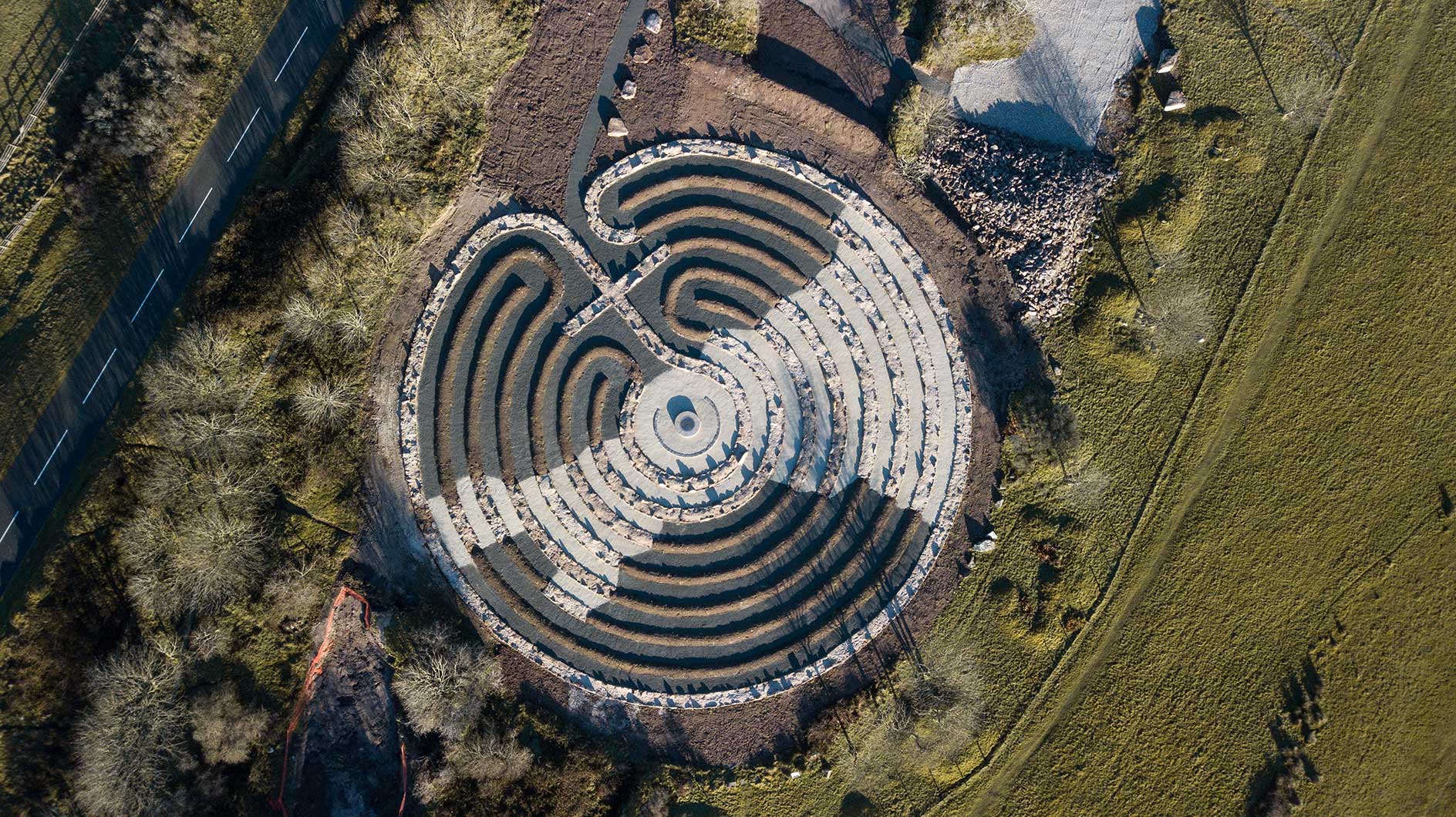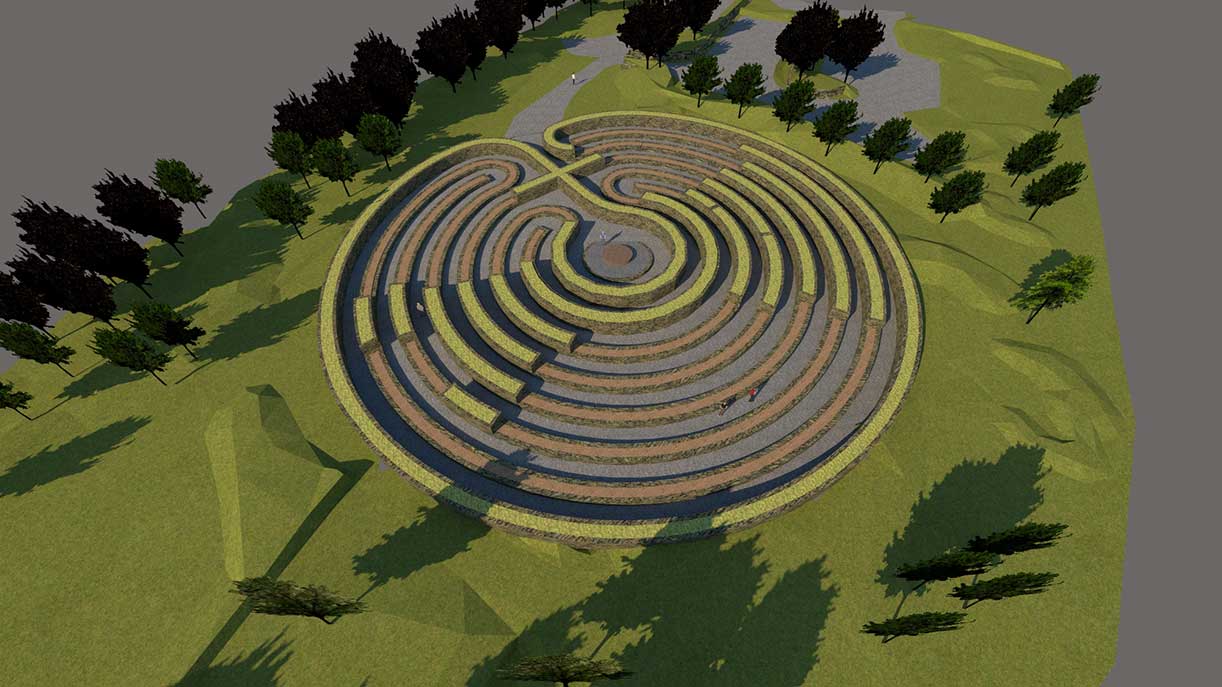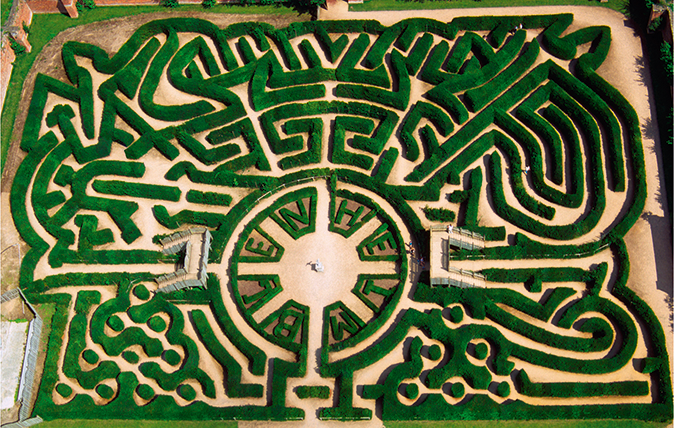The vast classical labyrinth being built in the heart of Cornwall
Kerdroya will become the largest classical labyrinth on the planet once complete. Annunciata Elwes takes a look at the work in progress.


The world’s largest classical labyrinth is currently being constructed from traditional Cornish hedging in the heart of Bodmin Moor, a project that has unexpectedly led to the foundation of the Outdoor University of Cornish Hedging.
This new piece of public art — Kerdroya — set to be 184ft in diameter on completion, replaces a disused car park with a joyful mixture of all the different local hedging styles in a ‘footprint’ of the Duchy, says the team behind the project Golden Tree Productions. Currently in progress, master hedgers on site are offering a range of Lantra-accredited courses and a six-month apprenticeship for 62 students.
The humble and ancient Cornish hedge, stresses artistic director Will Coleman, ‘is not what in England is called a hedgerow. Nor is it a dry-stone wall. But it is somewhere between the two and there’s an entire philosophy behind it — skills, folklore, technique and so on — intangible cultural stuff about how to do it properly. These parameters are hotly contested throughout Cornwall because the stone varies. In fact, Cornwall is said to be the most geologically diverse patch of the entire planet’.

Cleverly constructed of stone, compacted earth and turf, Cornish hedges are thought to be among the oldest manmade structures in the world still used for their original purpose.
‘The National Trust did a study and found grounders — the big boulders at the base of hedges — that were put in 4,000 years ago around Zennor. That’s 4,000 years of letting your cows out,’ quips Mr Coleman.
The county already contains 30,000 miles of hedging, vital Nature corridors that connect all 12 parts of the Cornish AONB, a home for more than 600 flowering plants. ‘Those flowers, in turn, support tens of thousands of invertebrates, which support carnivores and so on,’ explains Mr Coleman. ‘And the hedges contain seedbank from before humans started messing around with agriculture.
So as well as being wildlife corridors, these are corridors through time.’ The project — funded by Cornwall Council, Cornwall AONB, Arts Council England, the National Lottery Heritage Fund, Feast and Cornwall Heritage Trust — came about as part of the 60th anniversary celebrations of Cornwall’s protected landscape last year and is progressing well, although the opportunity to train future master hedgers may slow the process somewhat.
Exquisite houses, the beauty of Nature, and how to get the most from your life, straight to your inbox.

Once complete, probably in 2022, visitors will be able to walk among hedges topped with hawthorn and Cornish furze to the central clearing, where there’ll be an art installation by the Thrussells and views over Bodmin Moor and Colliford Lake. Via Hedge Pledge, anyone can purchase a yard of hedge to support the project (www.kerdroya.co.uk) ‘If you really want to see it in all its glory,’ adds Mr Coleman, ‘you want to come back in about 50 years, or even 100, when it’s matured and has developed its character.’

The war hero and diplomat who mastered the art of making mazes
Randoll Coate bluffed his way into 'labyrinthology' with a chance comment at a dinner party, and ended up making a
Annunciata is director of contemporary art gallery TIN MAN ART and an award-winning journalist specialising in art, culture and property. Previously, she was Country Life’s News & Property Editor. Before that, she worked at The Sunday Times Travel Magazine, researched for a historical biographer and co-founded a literary, art and music festival in Oxfordshire. Lancashire-born, she lives in Hampshire with a husband, two daughters and a mischievous pug.
